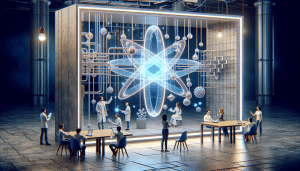You Won’t Believe Everyday Uses of Artificial Intelligence
Aiden Foster September 25, 2025
Artificial intelligence is shaping life in many unexpected ways. This guide explores practical and surprising tech and science applications for AI. Discover how these advances touch everything—from your home to your health and beyond. Dive in to find out what truly fuels the modern AI revolution.
Understanding Artificial Intelligence in Daily Life
Artificial intelligence is no longer just a concept from science fiction. In daily routines, machine learning and neural networks now perform tasks that were recently unthinkable. Smart assistants, for example, use natural language processing and vast datasets to respond to questions, control homes, and keep schedules organized. Chatbots on websites assist with complex queries, relying on algorithms that learn and adapt over time. These transformations show how AI quietly powers much of modern technology, making interactions more intuitive and efficient (Source: https://www.nist.gov/artificial-intelligence).
What surprises many is the subtle integration of AI algorithms in familiar settings. In social media, machine learning models tailor newsfeeds and recommend content based on user preferences and engagement history. Video streaming services, through deep learning, analyze viewing habits and curate shows or movies that match users’ tastes. These technologies continually refine themselves, creating a personalized experience that can feel uniquely customized, even as user needs shift (Source: https://www.brookings.edu/articles/how-artificial-intelligence-is-transforming-the-world/).
Integration of artificial intelligence also extends to smart appliances and cars. Devices like robot vacuums, connected thermostats, and voice-driven speakers all rely on AI-powered decision-making. In vehicles, driver-assistance systems and navigation tools use real-time sensor data to help with route planning, hazard detection, and even automated parking. By embedding AI in so many places, technology companies enable smoother, safer, and more personalized everyday experiences (Source: https://www.scientificamerican.com/article/how-ai-will-change-your-world-in-the-next-decade/).
AI at Home: Smart Devices Transforming Daily Routines
Smart homes represent one of the most compelling areas where artificial intelligence applications flourish. Today’s devices can recognize voices, learn routines, and adjust settings automatically for climate, lighting, and security. Smart refrigerators may alert you when supplies run low, while AI-driven speakers play personalized playlists based on time of day or recent activity. Behind these functions are complex neural networks that continuously analyze usage patterns to suggest improvements or new features (Source: https://www.nature.com/articles/d41586-019-03824-2).
Home security is another area that benefits greatly from machine learning. Modern security cameras employ AI to distinguish people, pets, and objects—alerting residents only when unusual activity is detected. Some systems can even recognize individual faces and track unexpected behaviors. This not only enhances peace of mind but allows for more efficient monitoring by reducing false alarms (Source: https://www.nist.gov/topics/artificial-intelligence).
Household chores are easier now, too. Robot vacuums and window cleaners rely on AI-powered navigation to map rooms and avoid obstacles. Washing machines adjust cycles based on fabric type and soil level, thanks to embedded sensors and deep learning algorithms. These advancements represent a shift from manual control toward automation, fueled by the broader accessibility of artificial intelligence technologies in ordinary domestic life.
The Influence of AI on Health and Medicine
Artificial intelligence is reshaping how healthcare professionals deliver care and diagnose illness. Modern diagnostic tools can now process immense sets of medical data, recognizing subtle patterns that might escape the naked eye. AI models assist in reading X-rays, MRIs, and CT scans with high accuracy by learning from thousands of annotated images. Some clinical decision support systems even offer suggestions or red flags to physicians, helping guide care toward safer outcomes (Source: https://www.nih.gov/about-nih/what-we-do/nih-almanac/artificial-intelligence-health-research).
Wellness apps and wearable devices further bring the benefits of machine learning directly into daily routines. These tools track heart rate, sleep quality, physical activity, and more—using sophisticated models to interpret signals and suggest ways for users to improve their well-being. Personalized health recommendations become possible when devices leverage real-time data and pattern recognition, making self-care more informed and proactive (Source: https://www.health.harvard.edu/blog/how-ai-is-transforming-health-care-delivery-202210262849).
AI is also at the forefront of drug discovery and precision medicine. By analyzing huge datasets from genetic testing, AI can help identify potential links between genes and diseases. This speeds up development of targeted therapies while reducing costs. It demonstrates how artificial intelligence solutions are essential in modern research, delivering new options for treatments and a better understanding of disease mechanisms across various populations.
Artificial Intelligence and Transportation: Changing How People Move
Transportation industries embrace machine learning and robotics to make travel safer, faster, and more adaptive. Advanced driver assistance systems in cars use AI to analyze surroundings through sensors, cameras, and radar, warning of hazards or even applying brakes in emergencies. Sophisticated algorithms process traffic data in real-time for better route planning, minimizing congestion and travel time (Source: https://www.transportation.gov/automated-vehicles).
Urban planning increasingly depends on artificial intelligence models to optimize bus routes, predict demand for ride-sharing, or manage bike and scooter networks. Simulation tools powered by deep learning help cities plan for changing populations and environmental concerns. This integration of smart modeling enriches public infrastructure, providing clear, actionable insights for policy makers and city planners, which in turn benefits everyone who commutes or travels (Source: https://www.energy.gov/eere/vehicles/articles/artificial-intelligence-and-transportation).
Autonomous vehicles, powered by advancements in AI, are being tested and refined in controlled environments and public streets. These vehicles gather data from their surroundings, make split-second decisions, and communicate with infrastructure for better safety and efficiency. While full self-driving is still evolving, features like adaptive cruise control and lane keeping illustrate the tangible ways artificial intelligence already supports safer, more flexible transportation choices.
Work and Learning: AI’s Expanding Role in the Professional World
Artificial intelligence is transforming workplaces across industries, automating repetitive tasks and expanding human productivity. In offices, AI assistants schedule meetings, sort emails, and even summarize complex documents. Marketing teams use analytics to track consumer engagement, adjusting campaigns in real-time based on data-driven insights. Machine learning opens up new opportunities for creative problem-solving, freeing up specialists to focus on strategy and innovation (Source: https://www.forbes.com/sites/forbestechcouncil/2020/09/22/the-role-of-ai-in-the-future-of-work/).
Education is also evolving under AI’s influence. Adaptive learning platforms adjust content to each student’s pace and strengths, creating more engaging and effective experiences. Automated grading tools allow educators to give feedback sooner, helping students absorb information and grow. Artificial intelligence models within online education also detect learning gaps, providing additional support or guidance where users most need it (Source: https://ed.stanford.edu/news/ai-education-promise-and-pitfalls).
Career assessment and job matching platforms now rely on advanced AI systems to align candidates with appropriate roles, analyzing skill sets, interests, and even personality traits. This use of AI means finding opportunities or training resources is faster and more accurate, offering new pathways for professional development. These advances highlight the growing value of artificial intelligence in building both current and future careers.
Understanding the Ethical Side of Artificial Intelligence
The rise of artificial intelligence brings with it unique questions about data privacy, bias, and accountability. With vast data being processed, concerns about personal information security are paramount. Organizations develop best practices to ensure ethical data use, while regulatory frameworks evolve to protect users from unexpected risks. It’s crucial for AI developers and users alike to remain aware of how algorithms use and store sensitive data (Source: https://aiethicslab.com/ethics-in-practice).
Bias in machine learning models is another important challenge facing the field. AI trained on data reflecting social inequalities can inadvertently perpetuate these patterns. Researchers and industry leaders now invest in fairness-testing protocols, open-source tools, and diverse data sources to minimize risk. These efforts underscore the need for ongoing scrutiny and discussion around building just, beneficial systems for society.
Transparency and accountability are increasingly emphasized as AI moves into more facets of everyday life. Developers strive to make algorithms interpretable, explaining their decision-making process to both users and regulators. This transparency supports trust and enables responsible, informed use of artificial intelligence solutions worldwide, ensuring the benefits are shared and the risks are contained.
References
1. National Institute of Standards and Technology. (n.d.). Artificial Intelligence. Retrieved from https://www.nist.gov/artificial-intelligence
2. West, D. M., & Allen, J. R. (Brookings Institution). (n.d.). How artificial intelligence is transforming the world. Retrieved from https://www.brookings.edu/articles/how-artificial-intelligence-is-transforming-the-world/
3. National Institutes of Health. (n.d.). Artificial intelligence in health research. Retrieved from https://www.nih.gov/about-nih/what-we-do/nih-almanac/artificial-intelligence-health-research
4. United States Department of Transportation. (n.d.). Automated Vehicles for Safety. Retrieved from https://www.transportation.gov/automated-vehicles
5. Stanford Graduate School of Education. (n.d.). AI in education: Promise and pitfalls. Retrieved from https://ed.stanford.edu/news/ai-education-promise-and-pitfalls
6. AI Ethics Lab. (n.d.). Ethics in Practice. Retrieved from https://aiethicslab.com/ethics-in-practice








